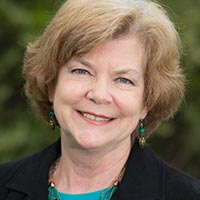To some people, leadership means being the boss and telling other people what to do—as that may be what they've experienced as leadership in the past. However, "bossing" may not be the best way to lead. In fact, all people regardless of title have the potential to be leaders.
Because there are many functions that have to take place in order to achieve a goal, there are many ways to lead.
A useful definition of a leader is, "someone who guides others in pursuit of a goal."
Being able to guide others to reach a goal takes personal qualities combined with certain skills. While personal qualities are a matter of genetics, temperament, personality and culture, most skills can be learned.
Here's a list of 10 leadership qualities that experts agree are part of good leadership (Gilbertson et al., 2006):
- Enthusiasm
- Preparation
- Communication
- Caring
- Creativity
- Problem-solving
- Character
- Dependability
- Adaptability
- Cooperation
However, not many individuals possess all of these qualities.
This means that if every organization needs people with these 10 qualities, all people have the potential to be leaders in their own unique ways to contribute to reaching a goal.
Identifying and appreciating personal strengths is key, along with challenging oneself to build up skills in the areas needed. For people who are developing their own leadership skills, partnering with others who have different strengths can create a powerful ("leader-ful") team. There may be one individual in charge of the organization, but many leaders contributing.
This is the view of leadership that we want to instill in youth. When given opportunities to lead, confidence is further developed in children and youth. By putting themselves "out there" to test their skills, to experience successes as well as failures, they learn to take responsibility. Self-efficacy is another word for confidence—it's defined by social scientists as "the optimistic self-belief in our competence or chances of successfully accomplishing a task and producing a favorable outcome."
Children and youth have lots of ideas. They want opportunities to try these ideas out and see if they make sense, if they matter and if they can be of value to the world. This is where the drive for service comes in, as the other side of the self-efficacy coin.
Going out in the community and providing a service is a powerful way to help children and youth build self-efficacy. This service can take many forms: Depending on their ages, the service could involve teaching younger children how to do something, connecting with a local nonprofit or business in a service project, or embarking on a more intense "service learning" project.
Service learning is a term used to describe a service project that includes a major learning component—developing research, reflection, facilitation and discussion skills—along with the service component.
Youth are interested, willing and capable of taking advantage of opportunities to lead and serve others and their community. Our role as adults is to help them identify their unique gifts, support the skills they want to develop, find out how they want to lead and serve, and create opportunities for them to do so.
 Written by Eileen Wise, a youth development specialist at Penn State Better Kid Care and primary author of the PYD series.
Written by Eileen Wise, a youth development specialist at Penn State Better Kid Care and primary author of the PYD series.
Reference:
Gilbertson, Anna, Pat Morreim, Carol Skelly, and Anne Stevenson. 2006. "10 Minute Leadership Lessons." Presented at the National Conference of the National Association of Extension 4-H Agents Milwaukee, WI, Oct. 23, 2006.
Image courtesy of/created by Libba Kelmor on behalf of Penn State Better Kid Care

